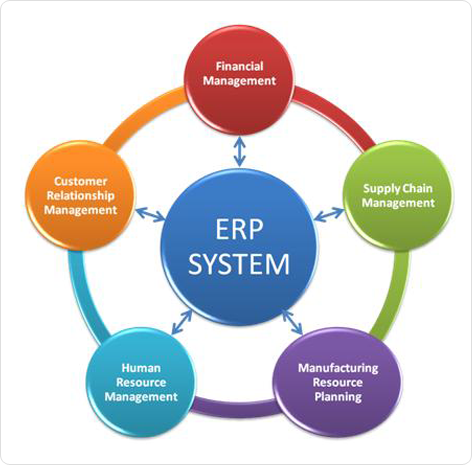ERP Implementation is one of the essential functions to carry out in any business. ERP software supports an organization’s primary business processes, such as accounting, budgeting, inventory management, supply chain management, order processing, human resources, and payroll. erp implementation process (erp migration)
Since ERP Implementation is such a large project with such a broad impact, it’s essential to follow best practices at every stage to guarantee that the ERP deployment goes well and that you get the most out of the system.
erp migration
Where should you start your ERP Implementation?
When people consider system implementations, they frequently start with desired features. However, new features or technology aren’t the main issues; what a business needs for growth is modern business processes. You can only increase your competitiveness and better serve foreign consumers if you have excellent processes that allow you to be agile and responsive.
Existing procedures are frequently rigid and inflexible, lacking to meet the needs of the business. Even when processes are proven and cost-effective, they must be updated to meet changing needs or enhanced with new capabilities, such as mobile access, alerts, and business intelligence. As a result, it’s critical to keep those procedures at the forefront of your implementation strategy.
Project Team
Case study after case study of ERP Implementation, all tells the same story: the implementation team is the make-or-break component. Great software is only as good as the team that implements it. People will not be successful if they lack the time, support, or expertise to complete the work properly, and the project will eventually suffer from delays, increased costs, and/or software that does not satisfy the company’s needs.
Companies that have suffered ERP failures or setbacks have frequently assigned personnel who “had the time” to work on the project. However, in order to be successful, you must hire people who “you can’t do without”. These are the busy employees who understand the company operations, collaborate well with coworkers, and are respected by upper management, Dedicate these individuals to the project full-time (40 available hours) or as many hours available per week.
Your team’s executive support is also essential. Priorities and resourcing trade-offs must be decided on in every big implementation. Without strong support and commitment, even qualified teams can flounder.
erp migration
Planning ERP Implementation
Schedule the implementation sequence realistically. Take into account the availability of your leadership team, managers, and in-house professionals who can help with the project.
Prioritize your requirements so you may concentrate on the key victories while establishing a foundation of software and technology that can grow with your company’s needs.
Your detailed plan and key performance indicators (KPIs) will be adapted to your individual needs. However, the following key activities are common steps in all successful implementations:
erp implementation process
1. Select a software and services partner to help in erp implementation
Your project team will almost certainly want assistance in implementing ERP software as they are the least experienced. Research and select a qualified ERP implementation consultant resource(s) with intimate knowledge of, and experience with, the ERP application you’ll be installing. Determine that they comprehend how the new software solution will benefit your present and future company processes. Verify this by interviewing their references.
Finally, review the project management software that a firm uses to make sure that it is compatible with your internal planning, scheduling, and tracking system.
2. Detail all project tasks
Your implementation partner will guide you to develop a detailed task list of all the things that need to be carried out. The list will be sizable i.e., in large. The tasks include:
- Project team training: Your team must understand about the software so that they can decide how to analyze your business processes.
- IT team training: The IT team must be educated so that they understand how to optimally install and maintain the system.
- Business user training: The desired people who are assigned to use the software, must understand how it works.
- Ongoing training: New users will need training as they join your company, so you will need a long-term plan in place.
3. Calculate work hours
Estimate the amount of time it will take to complete each assignment. Understanding the task and the effort involved is the first step, followed by assigning the number of “work hours” required. It can be a number of hours, but it must be precise. Add up the hours worked on each phase of the project and designate the person in charge of completing it.
erp implementation process
4. Conduct a conference room pilot
After the project has been launched, conduct a test run or a pilot (in a conference room) before going live. This conference room pilot will guarantee that the necessary business processes are in place for the company’s present and future demands. It’s critical to understand the breadth of options available in your ERP system when you create new processes – and to validate your processes with the project team and user community members.
5. Cleanse your data
Although it appears to be a simple task, data cleansing takes a long time. It’s best to start evaluating your data correctness as soon as possible because doing it right takes a lot of time and effort. Business process changes will occur during the project, so be prepared for additional data management tasks during deployment.
6. Keep everybody informed
A staff person should contact all key stakeholders on a weekly basis to inform them of the positives and “not so positives” of the implementation project’s development. The worst-case scenario is when people are unaware of current events and are caught off guard.
ERP Implemention essential process
erp implementation process
Not all firms have the same problems, so it’s a good idea to go over your business procedures and decide which ones to tackle first. Here’s a rundown of high-value categories to think about:

Business intelligence, including management alerts and dashboards
Your team requires immediate updates on business challenges as well as the capacity to delve down into the specifics to quickly handle issues — whether at work, at home, or on the road. You’ll need business intelligence built-in and data stored in a single database.
Customer relationship management (CRM) in ERP Implementation
CRM operations nowadays often affect every aspect of a company. Order management, operations, purchasing, engineering, accounts receivable, and shipping all share customer information with direct sales, distributors, retail showrooms, e-commerce, and customer and field support.
Finance and accounting
Financial transactions, KPIs, and analytics that are accurate and real-time are vital to every business, and they must be available across all locations and divisions. In addition to accounting, they must be integrated with costing, budgeting, forecasting, projects, asset management, compliance, and cash management.
Supply chain management (SCM) and manufacturing
Every firm faces tight deadlines, poor profits, and supply chain interruptions. Working with suppliers, carriers, import/export firms, banks, and other partners, and often on mobile devices across several locations, is required to manage them.
Human Resources (HR)
Managing a diverse workforce is more difficult than ever before, and your team requires rapid, secure access to employee data for payroll, benefits, budgeting, scheduling, and compliance. Employee recruitment, development, and retention are also important factors to consider when assessing current and new business plans.
erp migration
Tips to avoid extra ERP Implementation costs
- Maintain a focus on the entire cost of ownership (TCO). Manage your entire costs – and benefits over time to save expenditures and increase profits. Keep in mind that the deployment of an ERP system will have a significant influence on your organization.
- Match the company’s direction and avoid making unnecessary process adjustments. Many firms are under pressure to adapt how they function in order to accommodate their software, which increases both implementation and ongoing costs.
- Concentrate on the typical business operations that add significant value to the organization. Routine processes include managing client orders, revising prices, adding new products and services, modifying manufacturing specifics, and onboarding new personnel.
- System hacks and data breaches are expensive. When using the internet, use a secure cloud ERP solution where appropriate – confirm that your software and service suppliers support a range of secure software deployment options.
erp migration





